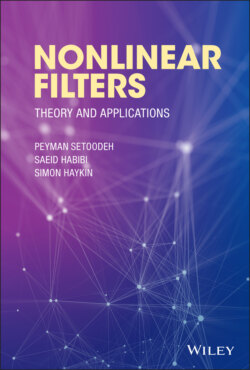Читать книгу Nonlinear Filters - Simon Haykin - Страница 31
2.9 Invertibility
ОглавлениеObservability can be studied regarding the characteristics of the information set, as well as the invertibility property of the corresponding maps. From this viewpoint, information sets can be divided into three categories [34]:
Instantaneously invertible: In this case, full information can be recovered and it would not be necessary to use a filter.
Asymptotically invertible: A filter can provide a solution that converges to the true values of states. In this case, the deployed filter may recover information with fewer observables compared with the instantaneously invertible case.
Noninvertible: In this case, even a filter cannot replicate full information.
For systems with unknown inputs, a subset of the inputs to the system may be unknown. For such systems, assuming that the initial state is known, it is often desired to reconstruct the unknown inputs through dynamic system inversion. Since a number of faults and attacks can be modeled as unknown inputs to the system, the concept of invertibility is important in fault diagnosis and cybersecurity. To be more precise, the following definitions are recalled from [35].
Definition 2.8 (‐delay inverse) The system described by the state‐space model (2.18) and (2.19) has an ‐delay inverse, if its input at time step , , can be uniquely recovered from the outputs up to time step , , for some nonnegative integer , assuming that the initial state is known.
Definition 2.9 (Invertibility) The system with the state‐space model (2.18) and (2.19) is invertible, if it has an ‐delay inverse for some finite , where the inherent delay of the system is the least integer for which an ‐delay inverse exists.
The topic of invertibility will be further discussed in Section 3.5, which covers the unknown input observers.
